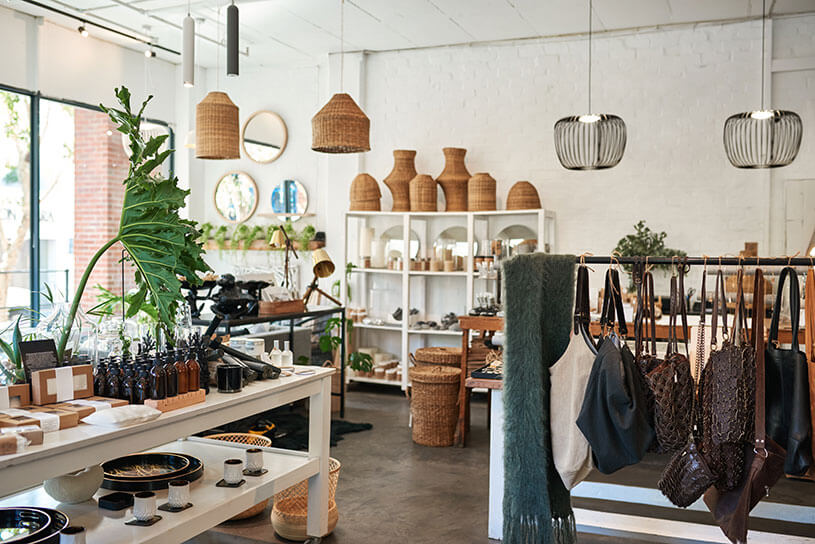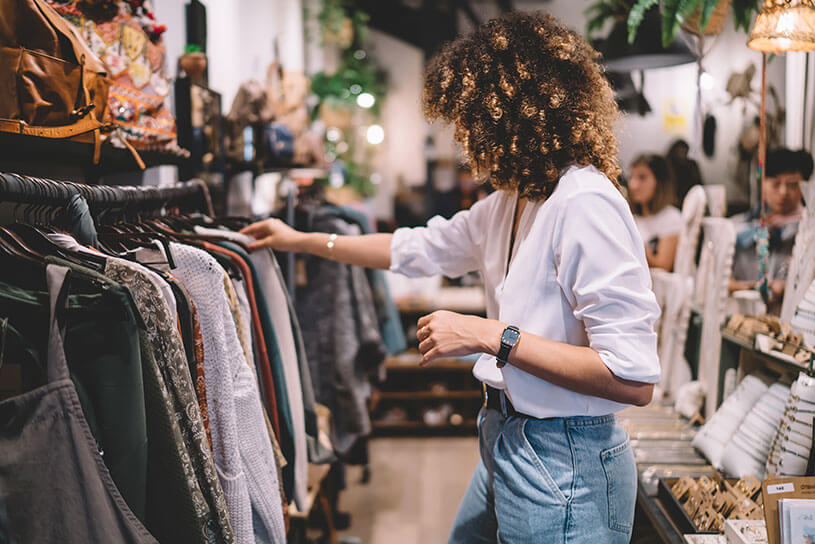As a shopkeeper, finding ways to increase sales and reach new customers is an important part of the job. As well as choosing the right inventory and building good customer relations, did you know that the layout and design of your store can also affect your customers’ shopping experience?
That’s where visual merchandising comes in – a way to design your store to meet the needs of both customers and staff. Keep reading to learn the visual merchandising skills you need to get started.
What is visual merchandising?
Visual merchandising is all about enhancing the visual appeal of your retail space to attract new customers and boost sales – and generally providing a pleasant shopping experience for your customers (alongside your customer service skills).
It involves strategically arranging and displaying your products, appealing to various senses, and using elements like signage and layout to create an engaging and cohesive visual experience for shoppers.
At its core, good visual merchandising can communicate your brand’s identity, highlight key products, and encourage customer interaction.
Visual merchandising techniques
The aspects of visual merchandising you choose to adopt will depend on your retail space. Think of your typical audience and what will appeal to them the most. Combine this with some of the visual merchandising techniques we’ll go over below and find what works best for you.
Window displays
Visual merchandising displays in windows are crucial because they’ll often be the first things potential customers see, enticing them to explore the rest of your shop. A well-designed window display can communicate your brand identity and give customers an idea of what they’ll find inside. It will set the tone for the overall shopping experience.
Think about the visual hierarchy of your display. Arrange your products in a way which guides the eye to the key items you want to focus on. Avoid overcrowding the display as well, as too much going on can overwhelm the customer.
If you’re a fashion store or run your own clothing brand, dressing mannequins can be a great way to show off your product selection. Think about upcoming trends, what’s already selling well, and the types of outfits worn by your customer demographic when styling your mannequins.
Store layout and floor plan
Don’t forget about the importance of your store layout as this can really influence purchasing behaviour. A natural sense of flow encourages thorough exploration and can ultimately lead to more sales. The path through your store should be intuitive to customers.
Creating clearly defined sections within your store based on product type or promotions can also help simplify the shopping experience. Use clear signage to highlight promotions and key products.
Always remember that while aesthetics are important, it’s better to prioritise functionality. Make sure that your store layout accommodates both staff and customer needs.
And of course, make sure customer accessibility is a priority. If your store is accessible for wheelchair users and those with prams, you can improve the shopping experience for those who need it.
Change with the seasons
Updating your store displays regularly to match the seasons, holidays, or relevant trends allows you to stay fresh and encourage repeat visits. To achieve this, make sure you’re keeping up to date with any changes in your industry or with popular culture.
Planning a schedule at the beginning of the year can help give you a rough idea of what’s to come – but don’t forget to be flexible. Make sure you’re able to make easy changes to jump on trends, highlight promotions, or adapt to any shifts in product sales.

Photo 2: mavoimages/stock.adobe.com
Target the senses
Whilst it’s called visual merchandising, don’t just focus on the visuals. Including the other senses in your design can be a great way to improve the shopping experience for your customers. Think about lighting, smell, and even touch.
While you need good lighting to highlight your products, is there also opportunity to introduce other colours to reflect your store’s ambience? A warmer light can make a cosier atmosphere for the colder months whilst a pink light can be a fun touch for a pink-focused display.
Smell is something else you can integrate into your store. Smells can trigger memories and feelings. Do you sell outdoor goods? Maybe replicating the smell of crisp country air can help your customers imagine using your products.
Bundling products
You should also think about your products themselves and how they’re arranged. If certain products work well together, consider displaying them next to each other to encourage multiple sales.
This works with all sorts of products – from clothing to homeware to exercise equipment. Look at your sales data to see which products are often bought together and go from there.
Have you ever been ready to pay in a shop and had something catch your eye by the till? Placing things in strategic locations is often called point-of-purchase placement and can be a great way to encourage impulse buying.
Visual merchandising courses
Studying visual merchandising can provide you with valuable skills in retail design, product presentation, and consumer behaviour.
While you don’t need to study a course to learn valuable visual merchandising skills, it can be helpful. This can especially be beneficial if you want to offer your services to other retail stores, working as a freelance visual merchandiser, or if you want to improve the visual merchandising in your own shop.
A visual merchandising course will help you learn the theories behind merchandising rules as well as give you a chance to gain experience in areas you may not be familiar with.
Depending on the experience of your tutor, different courses can focus on areas such as brand identity, window dressing and mannequin styling, and building floor plans – allowing you to choose the area you want to grow in.
You can find online visual merchandising courses or study an in-person course. The University of the Arts London offers a range of courses each focused on different areas of visual merchandising.
Visual merchandising jobs: your responsibilities
If you take on the role of visual merchandiser at your retail business, there are a few responsibilities you’ll adopt. These will include:
- conducting market research
- staying up to date with all the latest trends and industry developments
- testing and reporting
- promoting customer engagement
Have you used any forms of visual merchandising in your shop? Let us know what you’re most proud of in the comments below.
More guides on running a retail business
- Sale of goods and Consumer Rights Act 2015: guide for small businesses
- Rise of shoplifting – how to protect your shop from shoplifters
- Press release tips
- Storytelling in marketing – how to tell your business story
- Do I need public liability insurance?
Get a quote for shop insurance
Looking for shop insurance? Build a policy that includes public liability insurance and employers’ liability insurance, as well as other covers that suit your business.
Photo: BullRun/stock.adobe.com
